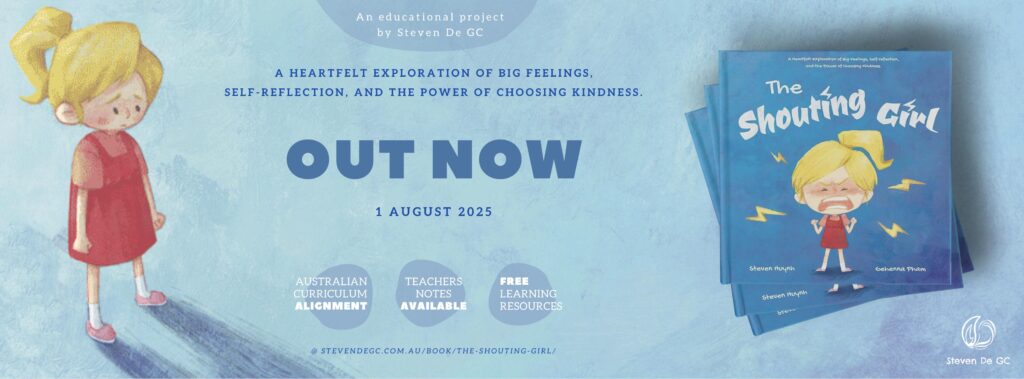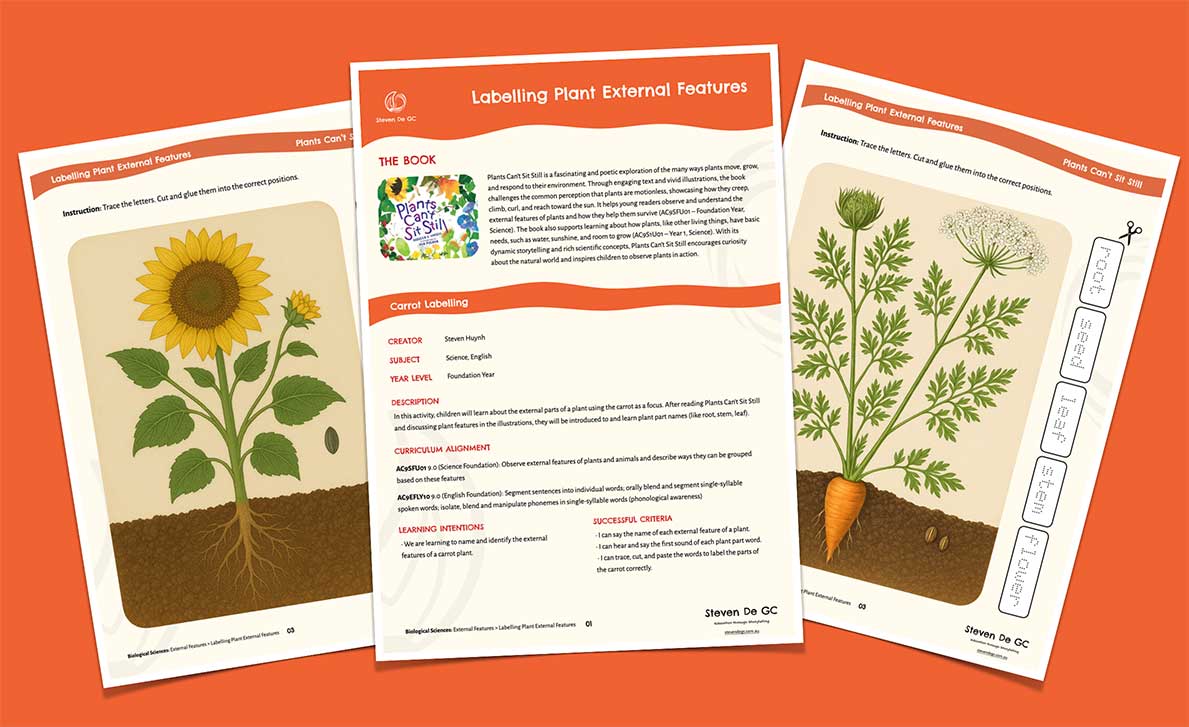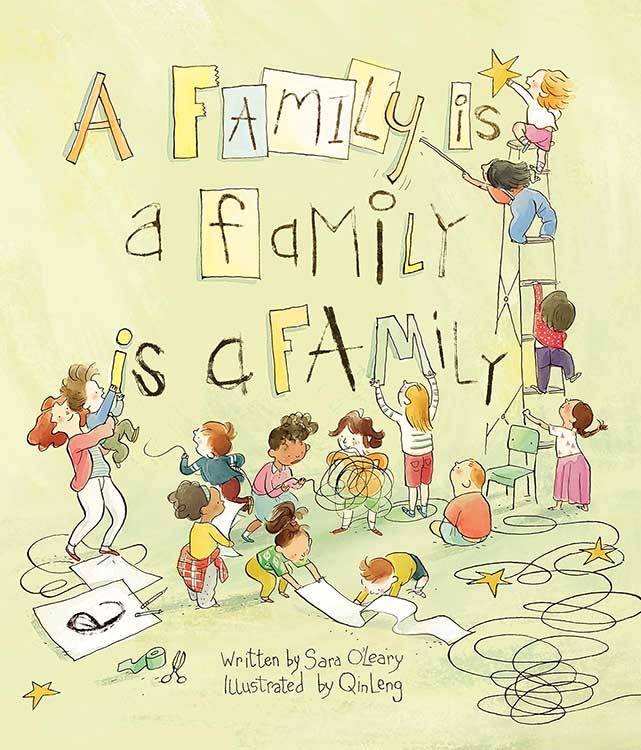English Language and Literacy
English Language and Literacy Books and Activities for Kids (Foundation to Year 2)
- Support children’s literacy growth with our collection of picture books, hands-on literacy activities, and practical articles for teachers and parents. All aligned with the Australian Curriculum for Foundation (age 5), Year 1 (age 6), and Year 2 (age 7).
- Explore key language topics through our Book Hub, including compound and complex sentences, topic-specific vocabulary (including words and noun groups), rhyme, repetition, prepositions, alliteration, similes, and sequencing events in texts.
- Our teacher-and-parent-friendly articles offer tips on building comprehension strategies, encouraging fluency, and strengthening interaction skills, whether you’re guiding students in the classroom or supporting learning at home.
- Ideal for educators and homeschoolers looking to nurture confident young readers and writers through story-rich and language-focused learning.
Topics in this subject
-
[T4R] Let’s Build a Boat: L6 Writing a Boat-making Procedure
📔 Let’s Build A Boat by Jane Godwin• We are learning to write instructions about how to make a good boat base (a raft).
AC9E1LA02 (English Language and Literacy – Year 1) AC9E1LE03 (English Language and Literacy – Year 1) AC9E1LY06 (English Language and Literacy – Year 1) AC9E2LA02 (English Language and Literacy – Year 2) AC9E2LE03 (English Language and Literacy – Year 2) AC9E2LY06 (English Language and Literacy – Year 2) AC9TDE2P02 (Design and Technologies – Year 1, Year 2) -
[T4R] Let’s Build a Boat: L5 Connecting to a Different Text
📔 Let’s Build A Boat by Jane Godwin• We are learning to compare boat issues in a different text to make a good boat.
-
[T4R] Let’s Build a Boat: L4 Literal Retrieval
📔 Let’s Build A Boat by Jane Godwin• We are learning to find information from the text to help us understand it better.
-
[T4R] Let’s Build a Boat: L3 Making Connections
📔 Let’s Build A Boat by Jane Godwin• We are learning to respond to a text.
AC9E1LA02 (English Language and Literacy – Year 1) AC9E1LA08 (English Language and Literacy – Year 1) AC9E1LE02 (English Language and Literacy – Year 1) AC9E1LY05 (English Language and Literacy – Year 1) AC9E2LA02 (English Language and Literacy – Year 2) AC9E2LA08 (English Language and Literacy – Year 2) AC9E2LE02 (English Language and Literacy – Year 2) AC9E2LY05 (English Language and Literacy – Year 2) AC9TDE2P01 (Design and Technologies – Year 1, Year 2) -
[T4R] Let’s Build a Boat: L2 Making Predictions
📔 Let’s Build A Boat by Jane Godwin• We are learning to make predictions about the text.
AC9E1LA08 (English Language and Literacy – Year 1) AC9E1LY02 (English Language and Literacy – Year 1) AC9E1LY05 (English Language and Literacy – Year 1) AC9E2LA08 (English Language and Literacy – Year 2) AC9E2LY02 (English Language and Literacy – Year 2) AC9E2LY05 (English Language and Literacy – Year 2) AC9TDE2K01 (Design and Technologies – Year 1, Year 2) -
[T4R] Let’s Build a Boat: L1 Background Knowledge
📔 Let’s Build A Boat by Jane Godwin• We are learning to use what we already know to help us understand the text.
-
One Duck Stuck
Written by Phyllis Root
Illustrated by Jane Chapman
Published by CWP
Theme/topic: Counting, Repetition, and Rhyme
This picture book invites children to count along as various animals come to help a duck who’s stuck in the muck. The repetitive, rhyming text supports early literacy development by exposing children to rhymes and predictable sentence patterns (AC9EFLE04 – Foundation Year, English).
At the same time, the book reinforces key mathematical concepts by encouraging children to recognise numerals, match quantities, and practise sequencing numbers up to ten (AC9MFN01 – Foundation Year, Mathematics). With its engaging rhythm, vibrant illustrations, and opportunities for counting and number sequence, One Duck Stuck is an excellent resource for developing both early language and numeracy skills in an enjoyable and memorable way.
Mouse Count
Written & illustrated by Ellen Stoll Walsh
Published by HMH Books
Theme/topic: Counting and Narrative
This charming story supports early maths and literacy development. As a hungry snake finds and counts ten mice one by one, children are invited to practise counting forward and backward, reinforcing the concept of matching quantities with numbers (AC9MFN01 – Foundation Year, Mathematics).
The story has clear features of a narrative, which create opportunities for children to share ideas about events, such as the problem and its resolution, and the characters in the text (AC9EFLE02 – Foundation Year, English). Children can also retell the story through drawing, role-playing, or sequencing events, building their comprehension and creative expression (AC9EFLE05 – Foundation Year, English).
With its simple text, bold illustrations, and engaging plot, Mouse Count is an ideal resource for integrating numeracy and literacy in early childhood learning.
Labelling Plant External Features
📔 Plants Can’t Sit Still by Rebecca Hirsh• We are learning to name and identify the external features of a carrot plant.
Forming an Effective Talk For Reading Unit
Discover how a text’s literary features, reading skills, and the curriculum come together to form a complete Talk for Reading unit.
Reading Skills for Early Years Students
By the end of Year 2, students develop key reading skills that support comprehension and fluency. Explore these skills and how they help foster these abilities.
The Shouting Girl
Written by Steven Huynh
Illustrated by Gehenna Pham
Published by Steven De GC
Theme/topic: Emotion recognition, Emotional regulation, Inclusion, Recount, Rhyme, and Vocabulary expansion
The story follows a young girl who struggles to express herself calmly, often shouting when she feels frustrated or unheard. Through her journey, she learns to recognise and understand her emotions (AC9HPFP03, AC9HP2P03 – Foundation to Year 2, Health and Physical Education) and works to develop positive strategies for expressing her thoughts and feelings in respectful ways (AC9HPFP02, AC9HP2P02 – Foundation to Year 2, Health and Physical Education).
The story also encourages children to explore characters’ perspectives and emotional responses, fostering empathy (AC9HP2P01 – Health and Physical Education, Years 1 and 2). It helps them define safe and unsafe environments, such as calm corners, through interactions with friends in a classroom, establishing help-seeking strategies in such situations (AC9HP2P05 – Health and Physical Education, Years 1 and 2).
With its poetic language and engaging illustrations, The Shouting Girl helps students understand how rhyme and rhythm create cohesion in a text. It also explores how words and images shape settings and characters, along with other literary features such as lists of three and similes.
AC9E1LA04 (English Language and Literacy – Year 1) AC9E2LE03 (English Language and Literacy – Year 2) AC9E2LE04 (English Language and Literacy – Year 2) AC9HP2P01 (Health and Physical Education – Year 1, Year 2) AC9HP2P02 (Health and Physical Education – Year 1, Year 2) AC9HP2P03 (Health and Physical Education – Year 1, Year 2) AC9HP2P05 (Health and Physical Education – Year 1, Year 2) AC9HPFP02 (Health and Physical Education – Foundation) AC9HPFP03 (Health and Physical Education – Foundation)Family Diversity with A Family is a Family is a Family: A Curriculum-Aligned Review
Explore family diversity and inclusion in A Family is a Family is a Family, aligned with key Australian Curriculum areas for Health, HaSS, English, and Visual Arts.
[T4R] A Family is a Family is a Family Reading Unit for Foundation Year
📔 A Family Is a Family Is a Family by Sara O’LearyAC9AVAFC01 (Visual Arts – Foundation) AC9EFLA07 (English Language and Literacy – Foundation) AC9EFLE02 (English Language and Literacy – Foundation) AC9EFLY01 (English Language and Literacy – Foundation) AC9EFLY02 (English Language and Literacy – Foundation) AC9EFLY05 (English Language and Literacy – Foundation) AC9EFLY07 (English Language and Literacy – Foundation) AC9HPFP01 (Health and Physical Education – Foundation) AC9HSFS03 (Humanities and Social Sciences – Foundation) AC9HSFS04 (Humanities and Social Sciences – Foundation) AC9HSFS05 (Humanities and Social Sciences – Foundation)Selecting a Quality Text for Foundation Year’s Family Unit (Case Study)
Discover how A Family is a Family is a Family enriches early literacy through Talk For Reading, discussing family diversity and love in Foundation Year.
Plants Can’t Sit Still
Written by Rebecca Hirsh
Illustrated by Mia Posada
Published by Millbrook Picture Books
Theme/topic: Basic needs, External features, and Vocabulary expansion
Plants Can’t Sit Still is a fascinating and poetic exploration of the many ways plants move, grow, and respond to their environment. Through engaging text and vivid illustrations, the book challenges the common perception that plants are motionless, showcasing how they creep, climb, curl, and reach toward the sun. It helps young readers observe and understand the external features of plants and how they help them survive (AC9SFU01 – Foundation Year, Science). The book also supports learning about how plants, like other living things, have basic needs, such as water, sunshine, and room to grow (AC9S1U01 – Year 1, Science). With its dynamic storytelling and rich scientific concepts, Plants Can’t Sit Still encourages curiosity about the natural world and inspires children to observe plants in action.
[T4R] A Family is a Family is a Family: L6 Reflecting and Evaluating
📔 A Family Is a Family Is a Family by Sara O’Leary• We are learning to reflect on and evaluate the text.
[T4R] A Family is a Family is a Family: L5 Summarising
📔 A Family Is a Family Is a Family by Sara O’Leary• We are learning to summarise the key messages of the text.
Selecting Quality Texts for Effective Early Year Reading
Learn how to select quality texts for early year literacy. Explore engagement factors and literary elements to enhance your planning.
[T4R] A Family is a Family is a Family: L4 Connecting to a Similar Text
📔 A Family Is a Family Is a Family by Sara O’Leary• We are learning to extend our connections to a similar text.



![[T4R] Let’s Build a Boat: L6 Writing a Boat-making Procedure](https://stevendegc.com.au/wp-content/uploads/2025/05/LetsBuildaBoat-T4R-Lesson6-Cover.jpg)
![[T4R] Let’s Build a Boat: L5 Connecting to a Different Text](https://stevendegc.com.au/wp-content/uploads/2025/05/LetsBuildaBoat-T4R-Lesson5-Cover.jpg)
![[T4R] Let’s Build a Boat: L4 Literal Retrieval](https://stevendegc.com.au/wp-content/uploads/2025/05/LetsBuildaBoat-T4R-Lesson4-Cover.jpg)
![[T4R] Let’s Build a Boat: L3 Making Connections](https://stevendegc.com.au/wp-content/uploads/2025/05/LetsBuildaBoat-T4R-Lesson3-Cover.jpg)
![[T4R] Let’s Build a Boat: L2 Making Predictions](https://stevendegc.com.au/wp-content/uploads/2025/05/LetsBuildaBoat-T4R-L2-Cover.jpg)
![[T4R] Let’s Build a Boat: L1 Background Knowledge](https://stevendegc.com.au/wp-content/uploads/2025/05/LetsBuildaBoat-T4R-L1-Cover.jpg)







![[T4R] A Family is a Family is a Family Reading Unit for Foundation Year](https://stevendegc.com.au/wp-content/uploads/2025/03/T4R-A-Family-is-a-Family-UnitOverview.jpg)

![[T4R] A Family is a Family is a Family: L6 Reflecting and Evaluating](https://stevendegc.com.au/wp-content/uploads/2025/03/T4R-A-Family-is-a-Family-L6-Cover.jpg)
![[T4R] A Family is a Family is a Family: L5 Summarising](https://stevendegc.com.au/wp-content/uploads/2025/03/T4R-A-Family-is-a-Family-L5-Cover.jpg)

![[T4R] A Family is a Family is a Family: L4 Connecting to a Similar Text](https://stevendegc.com.au/wp-content/uploads/2025/03/T4R-A-Family-is-a-Family-L4-Cover.jpg)